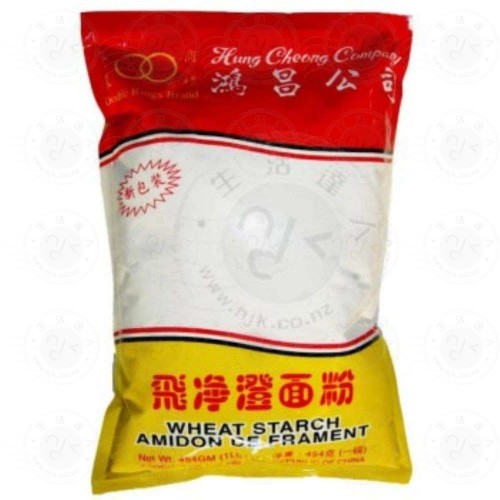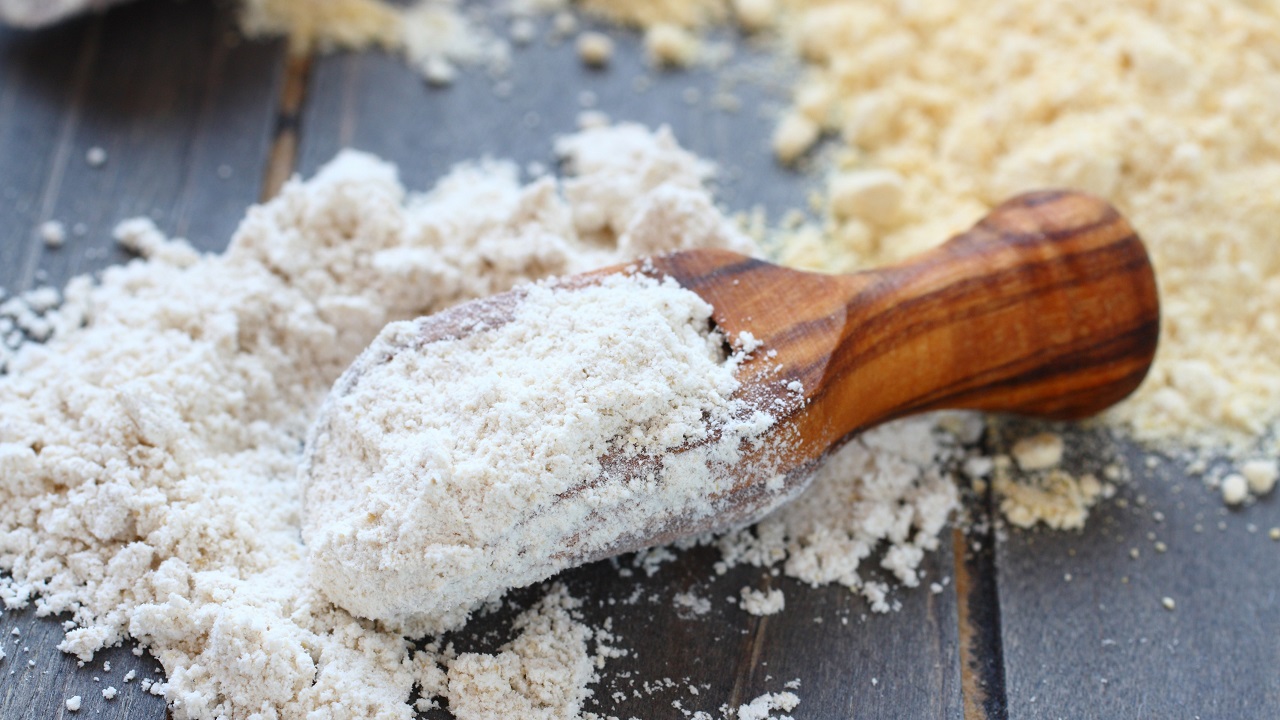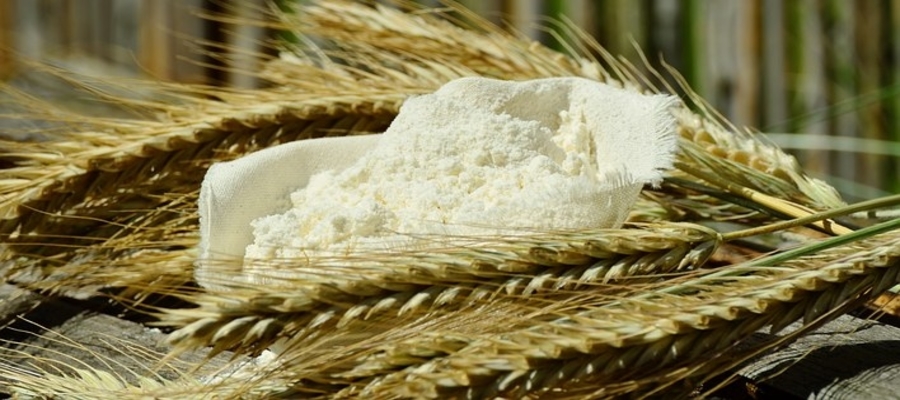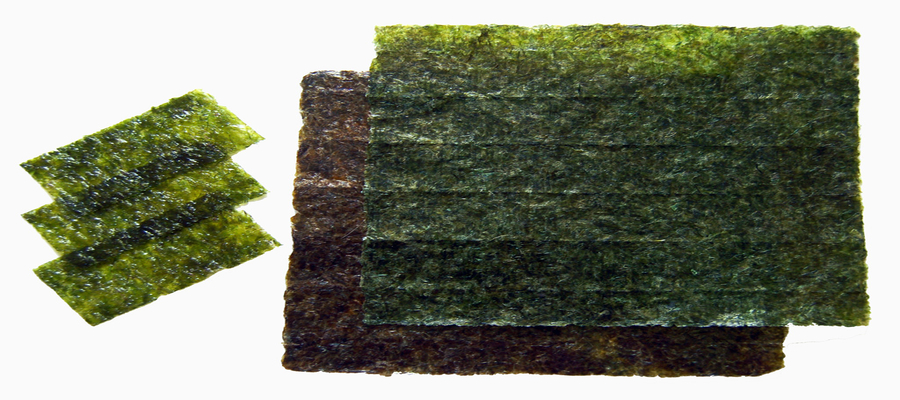Wheat starch is a fine white powder derived from wheat grains. It is a carbohydrate obtained by separating the starch granules from the protein and fiber components of wheat flour. The process typically involves washing wheat flour dough to remove the water-soluble constituents, leaving behind the starch.
Wheat starch is primarily composed of amylopectin and amylose, two types of polysaccharides that form the structure of starch granules. It is commonly used as a thickening agent, stabilizer, or binder in various food products due to its unique properties. It has a neutral flavor and is capable of absorbing water and forming a gel-like consistency when cooked or heated.
In the food industry, wheat starch is used in applications such as bakery products, soups, sauces, desserts, and processed meats. It helps improve texture, enhance viscosity, and provide stability to the final product. Wheat starch can also be found in some personal care products, pharmaceuticals, and industrial applications.
It's important to note that wheat starch contains gluten, which is a protein complex that can cause adverse reactions in individuals with gluten-related disorders such as celiac disease or non-celiac gluten sensitivity. Therefore, individuals with gluten intolerance or sensitivity should avoid consuming products that contain wheat starch.
Which nutrients can be found in wheat starch?
Wheat starch primarily consists of carbohydrates and provides a source of energy. However, it does not contain significant amounts of other essential nutrients like protein, fat, vitamins, or minerals. The refining process of wheat starch removes most of the bran and germ components of wheat, which are where the majority of nutrients are found in whole wheat.

Wheat starch
As a result, the nutritional value of wheat starch is relatively low compared to whole wheat or other whole grain products. If you're looking for a more nutrient-dense option, it is advisable to choose whole wheat or other whole grain products that retain the bran and germ, which provide dietary fiber, vitamins (such as B vitamins and vitamin E), minerals (such as magnesium and zinc), and other beneficial phytonutrients.
It's important to note that while wheat starch itself may not offer a wide range of nutrients, it can still be used as an ingredient in various foods that may provide additional nutrients from other sources. It's always recommended to consider the overall nutritional composition of the food product as a whole rather than focusing solely on a single ingredient.
How to use wheat starch
If you do gluten free baking for your family, you’ll mostly come across a variety of flours and starches in your favorite recipes. Some famous gluten free flours contain almond flour, coconut flour, and rice flour. Some common starches include cornstarch, tapioca starch, and potato starch. But do you know the difference between flour and a starch? Both of these start with the same raw ingredient – some kind of grain, such as wheat. Flour goes through a few levels of processing. But it is fairly minimal, especially for whole grains – whole grain flour contains carbohydrate, protein, and fiber. Starches go through additional processing to remove the substances which leaves them almost completely lacking nutrition. Wheat starch is basically a starch made from the processed endosperm of the wheat grain. It is initially processed by dissolving the water-soluble starch and then evaporating the water. The end result is quality powdery starch. Because the gluten proteins have been detached, wheat starch does not lend any elasticity to dough. It is essentially used as a thickener.
Which gluten free products use Wheat Starch?

Source: https://imgp1.schaer.com/
Although gluten free wheat starch has been approved by the FDA (Food and Drug Administration), there is still a deal of doubt about it. It may solace you to know, however, the use of this in gluten free foods has been rigorously tested. Schär has been utilizing it for over 20 years. When a gluten free item enters the Schär facility, it goes through extra testing using the ELISA method to ensure it meets standards. In fact, more than 80% of the wheat starch tests are below 6ppm. Research has shown no evidence that dishes made with gluten-removed wheat starch are harmful to people with celiac disease. In a study conducted by the Tampere University Hospital in Finland, people were arranged into two groups – one consumed naturally gluten free foods and the other consumed gluten free foods made with wheat starch. After a year, both groups showed the same results on various tests as well as self-reported symptoms. Because the utilization of wheat starch in gluten free foods is still hotly debated, there are only a few commercial gluten free food products on grocery store shelves that list it as an ingredient. One is Schär’s Glutten Free Croissants. Available in various varieties, these croissants are light and flaky with an authentic and fresh-baked flavor you’ll fall in love with after one bite.
Which meals can one prepare with wheat starch?
Wheat starch is primarily used as a thickening agent, binder, or stabilizer in various food preparations rather than being a main ingredient itself. Here are a few examples of meals or dishes where wheat starch can be used:
-
Sauces and Gravies: Wheat starch can be used to thicken sauces and gravies, providing a smooth and consistent texture. It is commonly used in dishes like stir-fry sauces, creamy pasta sauces, and savory gravies.
-
Soups and Stews: Wheat starch can be added to soups and stews as a thickening agent to achieve a desired consistency. It helps to create a heartier texture and enhance the mouthfeel of the dish.
-
Baked Goods: Wheat starch can be used in certain baked goods to improve their texture and moisture retention. It is often used in gluten-free baking recipes as a substitute for wheat flour, although it should be noted that wheat starch still contains gluten and is not suitable for individuals with gluten intolerance or celiac disease.
-
Dumplings and Noodles: In some Asian cuisines, wheat starch is used to make dumpling wrappers or to create a chewy texture in certain types of noodles.
-
Coatings and Batters: Wheat starch can be included in batters or coatings for deep-frying or pan-frying various ingredients. It helps create a crispy and light texture on the outside of the food.
It's important to note that wheat starch is not typically used as a standalone ingredient or as a main component of a meal. It is primarily utilized for its functional properties in enhancing the texture and consistency of various dishes.
Which foods are made of wheat starch?
Wheat starch is commonly used as an ingredient in a variety of food products for its thickening, stabilizing, and binding properties. Here are some foods where wheat starch can be found:
-
Processed Meats: Wheat starch is often used in processed meats like sausages, hot dogs, and deli meats as a binder to improve texture, juiciness, and moisture retention.
-
Bakery Products: Wheat starch can be found in certain baked goods such as cakes, cookies, pastries, and bread products. It may be used as a texturizing agent or to improve the softness and shelf life of these items.
-
Dairy Products: Some dairy products, such as certain yogurts, ice creams, and puddings, may contain wheat starch as a thickening agent to achieve a desired consistency.
-
Sauces and Dressings: Many sauces, dressings, and condiments may contain wheat starch to thicken the product and provide a smoother texture. This can include salad dressings, ketchups, and various sauces for savory dishes.
-
Instant Foods: Some instant foods like instant noodles, instant soups, and instant mashed potatoes may contain wheat starch to aid in the quick preparation and achieve the desired texture.
-
Gluten-Free Products: While wheat starch itself contains gluten, there are specific gluten-free products on the market that use modified wheat starch, which has had the gluten removed. These gluten-free products can include bread, pasta, and other gluten-free alternatives.
It's important to carefully read food labels and allergen information to determine if a particular food contains wheat starch, especially if you have gluten intolerance or celiac disease.


